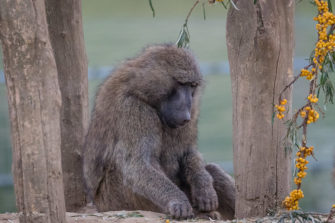
I wish I had a copy of Gendered Morality when I was writing my dissertation on assisted reproductive technologies (ARTs) in Iran. A number of points made by Ayubi mapped over directly with my work on ARTs: the influence of akhlaq ideals (a mode of Islamic ethics that aims to inculcate virtues in individuals, families, and societies) and gender roles throughout Persianate culture, concern to protect children from social discrimination based on their parentage, and the notion that mothers do not contribute to the conception and gestation of the child (other than serving as a sort of “pot” for the male seed to grow in, an idea which I found in the fatwas of several Shi`i scholars). Ayubi’s approach would have helped me center gender in my analysis, and would have spared me the insightful (and shameful) critique by Dr. Margaret Mohrmann during my dissertation defense when she simply asked, “Where are the women?” This was a prime example of Ayubi’s claim that current work on Islamic ethics has tended to neglect the importance of gender (even when scholars think they have incorporated it!).
In this post, however, I would like to discuss another area where the book raises important questions for me: the status of non-human animals in Islam. At several points in the book, Ayubi engages directly with the status of animals in the akhlaq texts, where she creates space for rich future discussions among scholars of Islamic ethics. Just as Ayubi asks how the akhlaq tradition might be redeemed for the modern world, I found myself asking how the akhlaq tradition might be redeemed for animal consciousness, especially in light of modern understandings and scientific explorations of language, emotion, ethics, and even religiosity in animals.
One fruitful area of investigation could be a continued look at the notion of khilafah (vicegerency). While Ayubi does touch on Saara Tlili’s critique of khilafah, further engagement with Tlili and her sources on khilafah would pose a deeper, more profound question that would challenge the entire akhlaq project: What if the understanding that humans are God’s vicegerents, in charge of installing and maintaining justice on earth, does not hold up to the scrutiny of early Islamic exegesis or in light of modern reevaluation of that exegesis? What does it mean for the entire edifice of akhlaq if this presumption of human vicegerency is not borne out upon further investigation? Perhaps this is hinted at, when, in her conclusion Ayubi recasts akhlaq as a method allowing all humans to seek ethical refinement and growth, rather than only a few (elite men). But even this idea presumes a sense of special human election and responsibility, which may not hold up in light of the early exegetes’ understandings of khilafah as suggested by Tlili. Ayubi’s investigation into the idea and the historical context of khilafah in the akhlaq tradition (278) can be read alongside Tlili’s investigation of the term among classical Qur’anic exegetes to help us see how changing contexts and understandings may have shaped Muslim ethical understandings of the meaning of khilafah.
Ayubi’s book also can be read profitably with works of feminist and animal ethics, like Carol J. Adams’s The Sexual Politics of Meat. In much the same way that bringing in contemporary philosophical discussions on gender, race, and class into dialogue with the akhlaq tradition, as Ayubi does, bringing in contemporary philosophical reflection on speciesism, drawing on Adams, can bear much fruit. Ayubi does touch on the ethicists’ views of animals at numerous points. In the elite, patriarchal views of the akhlaq thinkers, animals serve a similar purpose to that of women. Just as women serve as a foil to men, so do animals to humans (though, really to elite men). As Adams and others show, animals are envisioned in speciesism much the same way women are in patriarchy. Men (humans) are refined and intellectual, women (and animals) are gross, embodied, and lack reason. Without questioning the ethicists’ time-bound ideas of animals, we run the risk of further marginalizing and othering non-human animals by redeeming women into the hierarchy of creation, just as women were demoted within it by the patriarchal views of the ethicists. This might further entrench religious and philosophical justifications for the subservience of animals and their use as objects in much the same way religions and philosophical systems have justified such use and abuse based on race or gender. As we have come to see (or are coming to see), these beliefs about racial or gender inferiority have not borne scrutiny, and it may well come to pass that the same will apply to views about animals.
There does seem to be space to rehabilitate the akhlaq tradition for animals in ways similar to Ayubi’s rehabilitation of the tradition for women. Ayubi identifies points of tension between the akhlaq hierarchy (elite men at the top, other men below them, and all women below the lowest men) and the more inclusive notions of justice, possessing a soul, or having reason found in the Qur’an and even in the akhlaq texts themselves. These tensions allow her to argue for an akhlaq open to all human beings, including non-elite men and women. In a similar way we can see that the Islamic philosophers’ general presumptions about the bestial, instinctive, and irrational animal are in tension with Qur’anic statements about animals (see Tlili) and their own recognition in their akhlaq texts that animals have nafses, some animals have “tools” (making them thus “higher” than other animals), and some animals can be trained to a superior level through discipline and education. With these openings, we might put the akhlaq thinkers into dialogue with modern ethologists, animal behavioralists, and others thinking about animals and religion in much the same way that Ayubi puts the akhlaq thinkers into dialogue with feminist philosophers.
What can akhlaq tell us about how to live as decent and ethical (human) beings in a world in which we now have ample evidence of animal rationality and complex language capacities, from the “lowly” prairie dog, to the great ape who can learn sign language and communicate intelligibly with human beings, and even a dog who uses a speech-language pathology device to communicate in “sentences” of up to five words? Where we can measure compassionate and empathetic choices made by rats and mice, or deception, lying, and general intentional naughtiness by dogs, cats, and great apes? What are the implications of our increased knowledge of dolphin brains? The silent areas of the mammalian brain—which we know are responsible for thinking, imagination, and ethics in humans—is 40% larger in bottlenose dolphins than in humans, something that led John Lilly to speculate about the potential for intelligence and ethics in cetaceans that may equal (or exceed) that of human beings (80–83).

And if animal intelligence upsets the hierarchy of the akhlaq ethicists and their presumptions of rational exclusivity, what about notions of religiosity? Beyond the information we have learned from studying the brains of primates and their behavior, where we can see the structural capacities for and have observed in the field their altruism and even warfare, Jane Goodall and others have noted behaviors in primates that would likely be recognized as “religious” if observed in human beings. Most famous are the “waterfall dances” where chimpanzees display a sense of “wonder and awe” that Goodall sees as akin to at least a basic form of worship. Likewise, primatologist Barbara Smuts observed olive baboons engage in what she described as a Buddhist communal meditation, or sangha (300–301). The recent work of Donovan Schaefer would be especially useful to bring into the analysis of the akhlaq thinkers. Schaefer’s use of affect, or emotion, feeling, embodiment, and materiality to explore religion, including the possibility of animal religion, argues that religion is something pre-linguistic and pre-rational, which emerged early in the history of bodies (217). If this is the case, then religion is something open to many beings, beyond the human.
Much as Ayubi demonstrates how the ethicists’ culturally conditioned presumptions and stereotypes shaped their view of women, despite scriptural and other counterfactual sources, we might see how the ethicists did much the same when it came to animals. Tlili’s work and others shows a deep and rich presentation of animals as worshipers of God, capable of complex language, and able to make ethical (or unethical) choices. Our current understanding of these capabilities stands in stark contrast to the very instrumental view of animals held in the akhlaq tradition, views which likewise instrumentalized women and non-elite men. Just as Ayubi suggested with regard to gender that “utilizing others for one’s own ends, whatever the purported intent, diminishes both the utilizer and the utilized,” (275) I suggest her work can be extended to our thinking about non-human animals and Islamic ethics.

